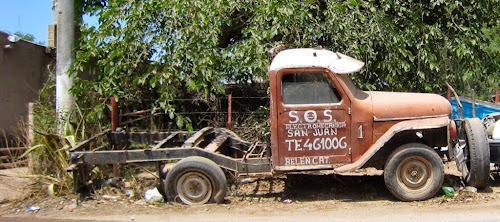That remnant of a fourth form geography class, delivered by the stereotypical tweed jacketed, leather elbowed teacher. The formula that confirms what you intrinsically know: it's colder on the top of Ben Nevis than it is down in Fort William. The sum a simple deduction of two degrees for every thousand feet.
These last few days have been prime examples. St. Miguel de Tucuman is known for being the hottest place in Argentina, but this is springtime, we'll be ahead of the heat, or so we've convinced ourselves. Getting off the overnight train in the early morning was 'interesting'. A simple euphemism for 'got to find shade'. Still we convince ourselves that 'we've still to acclimatise, tomorrow will be easier'.
Two days of overcast weather allow for a hastened, chastised retreat, a race for the Andean foothills. Whose hills are pale, ephemeral cutouts on the horizon, that even as we rise out of the fetid fug of the sugar Pampascapes, fail to form a hard focus. Yet the botanical graduations begin immediately. Sugar to tobacco, a narrow belt of stone fruit and blueberries, thence to Yungas jungle and cloud forest. culminating in the golden tussocks of the high country. From the laser precision of cropping agriculture to a natural abandonment. Tangles of aerial rooted figs and flowering trees, the zipping flights of hummingbird. Where every tree is a forest. A festoon of bromeliads and air plants. Through this I can hear an un-Argentine noise, the singing tones of a cascading river. Fast moving crystal water is so unusual, it's the perfect traveling companion.
The road up to Valle del Tafi is marketed as the country's longest continuous cycling downhill, and as is the standard on these occasions, is oft inflated to South American or World claim status. A eighty kilometre run. Comprehensible if you consider it as a downhill freewheel from Glasgow to Edinburgh. Which for us will be a long climb. A beautiful climb. We have those shade throwing jungle trees draped overhead, the resupply from the Rio Sosa and the company of the greater population of Tucuman escaping to the cool of the mountains and their Sunday asado. That lapse rate, it saves the sanity of a city. That blessed relief of physical geography.
Valle del Tafi has a similar history to the Raj hill stations of India, where the ruling Brits escaped for the season, only here the Tucumanos escape for the day. Hiring buses, piling into collectivos, loading up motos to stream in convoys up through the twist of hairpin bends, their ubiquity leaving us pondering if there will be any space for our tent. We need not have worried, for as the sun sets there's a mass exodus. We're told that it freezes at night. How will we survive?
That beautiful invigoration of cool mountain air and hot clear sun. You know from instinct, you don't need the geography lesson to understand what it is like back down below. Lapse rates writ large.


